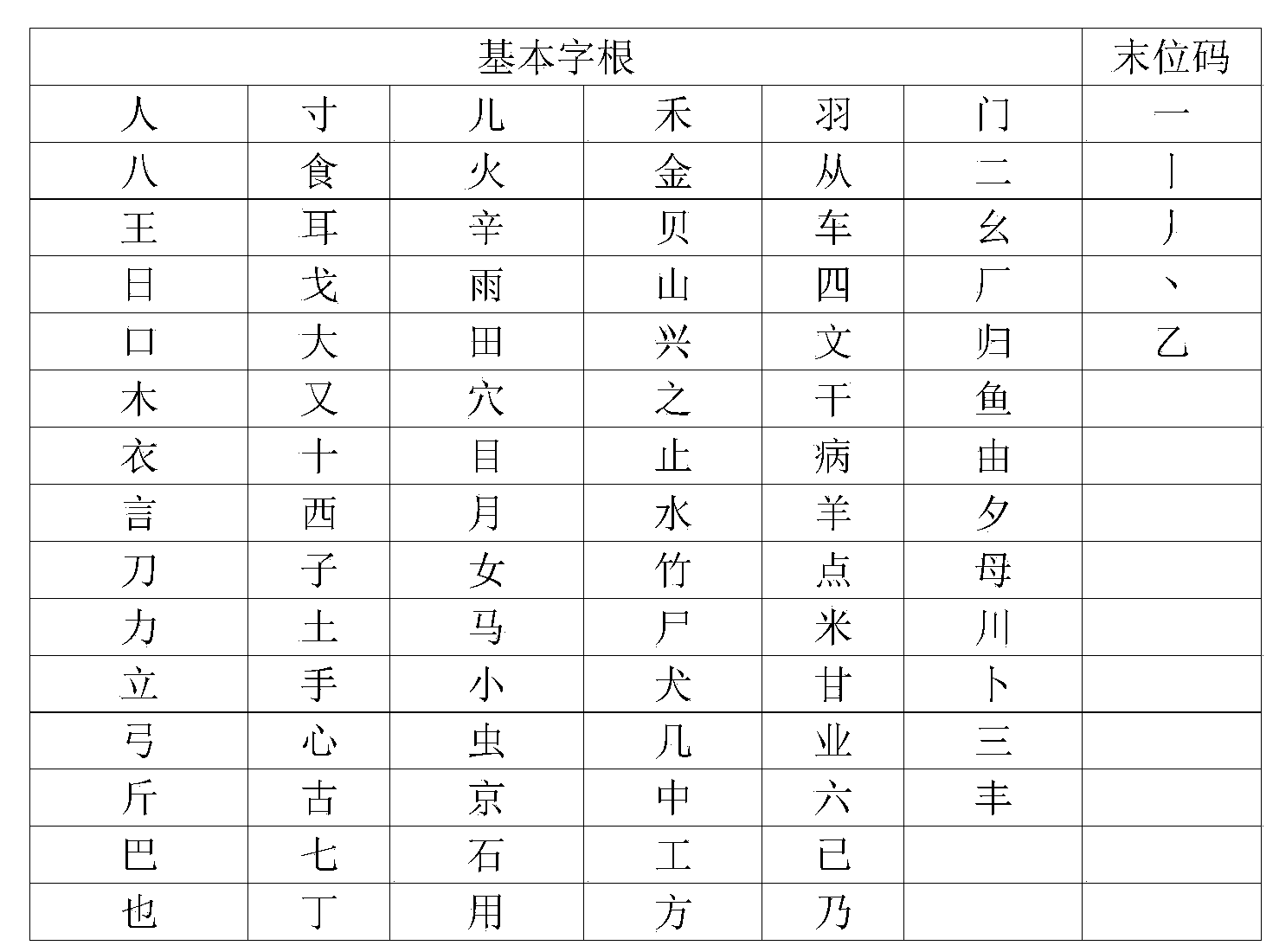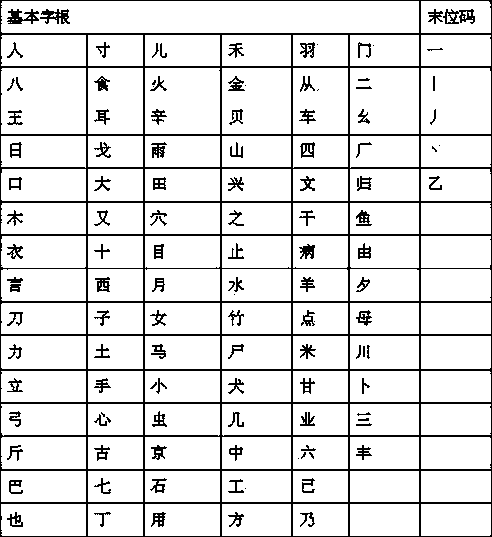Root split-based common Chinese character coding system
A technology of Chinese character coding and coding system, applied in the field of Chinese character coding, can solve problems such as the redundancy of radical decomposition methods, achieve the effect of reducing the number of uses and increasing the use rate
- Summary
- Abstract
- Description
- Claims
- Application Information
AI Technical Summary
Problems solved by technology
Method used
Image
Examples
Embodiment Construction
[0017] According to the method of the present invention, the result of radical splitting is shown in Table 2. There are 3182 commonly used Chinese characters in total.
[0018] Table 2 General table of Chinese character root representation
[0019] Chinese characters
[0020] Bei
[0021] Fennel
[0022] Yellow
[0023] Delay
[0024] Attached
[0025] Cuckoo
[0026] Shop
[0027] Kui
[0028] Wretched
[0029] Axillary
[0030] Sincere
[0031] Collapse
[0032] Hail
[0033] Zhu
[0034] Dizzy
[0035] busy
[0036] Fear
[0037] Pan
[0038] Wet
[0039] Swim
[0040] Violent
[0041] Worm
[0042] Ming
[0043] Mock
[0044] Lame
[0045] Turn
[0046] Help
[0047] year old
[0048] ask
[0049] Wings
[0050] Interest
[0051] .
PUM
 Login to View More
Login to View More Abstract
Description
Claims
Application Information
 Login to View More
Login to View More - R&D
- Intellectual Property
- Life Sciences
- Materials
- Tech Scout
- Unparalleled Data Quality
- Higher Quality Content
- 60% Fewer Hallucinations
Browse by: Latest US Patents, China's latest patents, Technical Efficacy Thesaurus, Application Domain, Technology Topic, Popular Technical Reports.
© 2025 PatSnap. All rights reserved.Legal|Privacy policy|Modern Slavery Act Transparency Statement|Sitemap|About US| Contact US: help@patsnap.com


